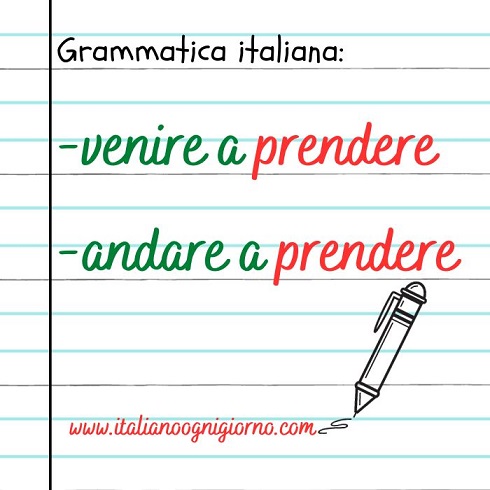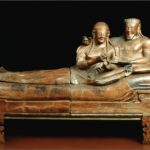(English follows)
Capita quasi ogni anno, prima che faccia capolino l’inverno, che si verifichi un’intervallo di bel tempo, con giornate luminose e tiepide nel pieno della stagione autunnale, nel periodo di fine ottobre-inizio novembre.
Un rialzo delle temperature mette in pausa pioggia, nebbia e freddo. Questo fenomeno avvolto da tradizioni e leggende di origine cristiana è conosciuto come l’Estate di San Martino.
La leggenda
“L’Estate di San Martino dura tre giorni e un pochino” è un popolare detto che accompagna la leggenda dell’Estate di San Martino, una tradizione popolare italiana che celebra la fine dell’estate e l’inizio dell’autunno.
Si narra che un freddo giorno d’autunno, molto probabilmente proprio l’11 novembre, Martino uscendo a cavallo da una delle porte della città di Amiens, in Francia, si è imbattuto in un uomo molto povero, nudo e infreddolito. San Martino ha avuto pietà dell’uomo e ha deciso di aiutarlo. Così ha tagliato il suo mantello di lana donandogli la metà.
Pare che dopo pochi istanti abbia smesso di piovere, sia spuntato il sole e la temperatura sia diventata più mite. Quella notte Martino ha sognato Gesù rivelando di essere lui il mendicante. Quindi per commemorare quell’11 novembre San Martino mantiene la sua promessa (quasi) ogni anno, regalando un’interruzione dalla morsa del freddo e un periodo piacevole e mite.
La tradizione
L’Estate di San Martino nei Paesi anglosassoni viene chiamata “Indian Summer” (letteralmente Estate Indiana) ed è nota anche nelle culture francofone e iberofone.
Questa festività in alcune parti d’Italia è associata alla vendemmia e alla raccolta delle olive. In effetti questa piccola pausa di piacevole clima è vista come un momento di transizione e cambiamento verso l’inverno che sta per arrivare.
Una spiegazione scientifica
L’Estate di San Martino ha anche una spiegazione scientifica. Secondo molti esperti l’alta pressione, le alte temperature e il bel tempo sono dovuti all’espansione dell’anticiclone dalla Spagna verso tutto il Mediterraneo.
San Martino, da militare a santo
Martino da Tours è nato intorno al 317 da una nobile famiglia. Si è convertito al cristianesimo dopo l’episodio del mantello ed è stato battezzato. Dopo vent’anni di carriera militare è diventato Vescovo di Tours nel 371. Ha fondato il monastero di Ligugé, il più antico d’Europa.
san martino nella letteratura
L’estate di San Martino è celebrata in diverse poesie e presta il nome anche al titolo di un romanzo. Ricordiamo:
- una famosa poesia di Giosuè Carducci, intitolata appunto San Martino.
- una poesia di Giovanni Pascoli Novembre è dedicata all’Estate di San Martino
- anche Cesare Pavese ha dedicato una poesia al periodo intitolata Estate di San Martino.
- L’Estate di San Martino (Nachsommer, 1857) è uno dei romanzi più celebri di Stifter.
English version
It happens almost every year, before winter sets in, that there is an interval of good weather, with bright and warm days at the height of the autumn season, in the period from the end of October to the beginning of November.
A rise in temperatures puts a pause on rain, fog and cold. This phenomenon surrounded by traditions and legends of Christian origin is known as “L’Estate di San Martino”, Saint Martin’s Summer.
The legend
“Saint Martin’s Summer lasts three days and a little” (“L’Estate di San Martino dura tre giorni e un pochin) is a popular saying that accompanies the legend of Saint Martin’s Summer, an Italian popular tradition that celebrates the end of summer and the beginning of autumn.
It is said that one cold autumn day, most likely on November 11th, Martino, horse riding out of one of the gates of the city of Amiens, in France, came across a very poor, naked and cold man. Saint Martin took pity on the man and decided to help him. So he cut his woolen cloak and gave him half of it.
It seems that after a few moments it stopped raining, the sun came out and the temperature became milder. That night Martin dreamed of Jesus revealing that he was the beggar. So to commemorate that day of November 11th, Saint Martin keeps his promise (almost) every year, granting an interruption from the grip of the cold and a pleasant and mild period.
The Tradition
Saint Martin’s Summer in Anglo-Saxon countries is called “Indian Summer” and is also known in Francophone and Iberophone cultures.
This holiday in some parts of Italy is associated with the grape harvest and olive harvest. In fact, this small break of pleasant climate is seen as a moment of transition and change towards the winter that is about to arrive.
A scientific explanation
St. Martin’s Summer also has a scientific explanation. According to many experts, the high pressure, high temperatures and good weather are due to the expansion of the anticyclone from Spain towards the entire Mediterranean.
Saint Martin, from soldier to saint
Martin of Tours was born around 317 to a noble family. He converted to Christianity after the cloak episode and was baptized. After twenty years of military career he became Bishop of Tours in 371. He founded the monastery of Ligugé, the oldest in Europe.
Saint Martin in literature
The Estate di San Martino is celebrated in several poems and also lends its name to the title of a novel. We remember:
- a famous poem by Giosuè Carducci, entitled San Martino.
- a poem by Giovanni Pascoli Novembre is dedicated to the Summer of San Martino
- Cesare Pavese also dedicated a poem to the period entitled Summer of San Martino. (Estate di San Martino)
- St. Martin’s Summer (Nachsommer, 1857) is one of Stifter’s most famous novels.
- Il Discorso diretto e discorso indiretto in italiano

- I massacri delle foibe – Il Giorno del Ricordo

- Un racconto di Natale: Il Tesoro dei Poveri di Gabriele D’Annunzio

- Estate di San Martino- leggenda e tradizioni

- I verbi fraseologici: venire/andare a prendere

- Michela Murgia: tenace scrittrice e attivista italiana

- I Vini italiani |Storia e Cultura

- Come diventare migliori comunicatori in italiano

- 3 ways to pronounce the s in Italian

























